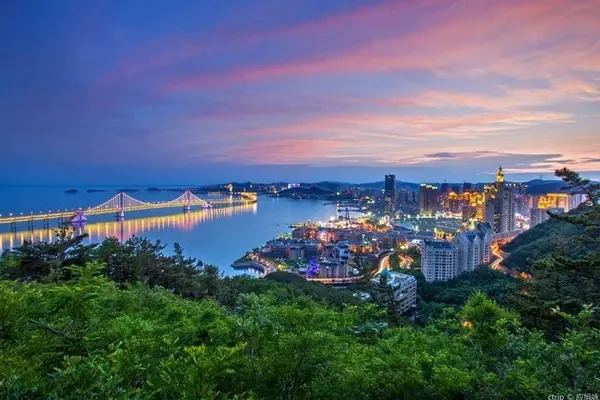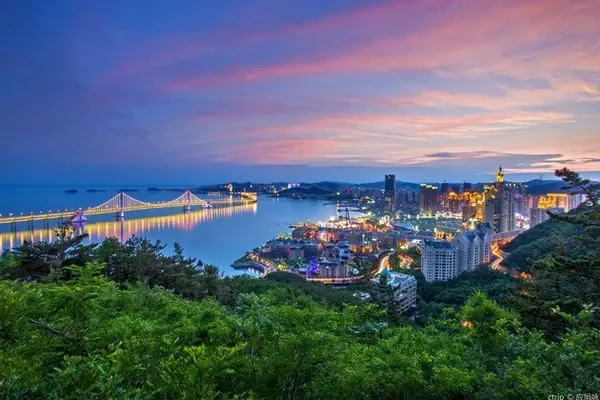China is so big, I want to visit it. Take you to a place you have been or have not been to.
The largest in Northwest China, Pingluo Yuhuang Pavilion in Ningxia
Yuhuang Pavilion is the name of an ancient architectural complex, which is distributed in various regions of our country. It can be said that it is a very common ancient building, and it is also a Taoist building. Ningxia Pingluo Yuhuang Pavilion is currently the largest preserved ancient building complex in Ningxia, and it is also known as the first pavilion in the Northwest. It naturally has its unique features.
Pingluo Yuhuang Pavilion Tickets for July 2012 are 22 yuan


Pingluo County belongs to Shizuishan City, Ningxia. Why does the Northwest First Pavilion appear here? In the early Ming Dynasty, Zhu Yuanzhang established the Weisuo system to consolidate border defense, which was the most important military system in the Ming Dynasty. Due to its geographical location, Pingluo has been an important frontier town in the past dynasties. There is a saying in history that "Pinglu (ie Pingluo) is peaceful in Hetao, and the Central Plains are peaceful". Ming Yongle built Pinglu City, and the early Qing Dynasty followed the Ming Dynasty’s Weisuo system. In the 30th year of Jiajing (1551), Pinglu Qianhu was set up. It is a farming system that combines soldiers with agriculture. guard. In the second year of Yongzheng, Pinglu was changed to Pingluo County, and Pingluo County was the transliteration of Pinglu.
Pingluo Drum Tower

An ancient temple, the Bailong Temple, was built here during the Yongle period of the Ming Dynasty. In the drought in the northwest, it was built by the local people to pray for rain. For more than 500 years since the beginning of Yongle in the Ming Dynasty, it has been built here for more than 500 years, and dozens of wars have occurred, and the lives have been devastated. In the first year of Guangxu, Taoist Yan Hebi, in order to save the people from the suffering of war and poverty, built a pavilion on the basis of the original Bailong Temple, intending to attract Buddhist immortals from all walks of life to sit on the fortress to protect the safety of the people, and renamed it "Jade Emperor Pavilion". . In the 28th year of the Republic of China, the government invested heavily in maintenance and expansion, forming a wooden structure complex centered on a two-story pavilion building on the top of the hill with nine ridges.
Pingluo Yuhuang Pavilion Three Emperors Hall (Emperor Fuxi, Emperor Shennong, Emperor Xuanyuan)



Entering the south gate of Yuhuang Pavilion, there is a statue of Avalokitesvara Bodhisattva invited from Laizhou, Shandong Province by the good people. It is 21.9 meters high. Later, some people used pure gold to gild the Bodhisattva statue. It is the tallest open-air Avalokitesvara in Northwest China. Gilded bronze statue.

A stone archway with three entrances and four pillars is the gate of Yuhuang Pavilion.


From Ming to Qing, Pingluo Yuhuang Pavilion experienced earthquakes, fires, reconstruction and expansion. After more than 580 years, it finally formed the largest Taoist temple in Ningxia with 16 halls enshrining 72 Taoist fairy tales. Although it has gone through different dynasties, different periods, different craftsmen, and different architectural techniques, the style is highly unified, the structure is rigorous, and it is a wonder of flat architecture. It seems that the designers of each expansion have considered the same factors to create such a spectacle.




Pingluo Yuhuang Pavilion is built on flat ground with bricks, divided into 4 levels, gradually rising from south to north. The highest building is Sanmu Hall, which is about 26 meters above the ground and has a construction area of 4440 square meters. The whole building has unique shape and majestic momentum.




From front to back, there are four entrance levels, one mountain gate tower; two and eight fairy halls; three jade emperor pavilions; four and three mother halls. Natural harmony. Although the halls, pavilions and pavilions are all exposed, they communicate with each other as a whole. Sixteen palaces and pavilions enshrine 72 Taoist immortals with different functions and shapes.
The Jade Emperor Hall is dedicated to the Jade Emperor God

Both sides of the Jade Emperor


Wuliang Hall is dedicated to the ancestor of Zhenwu

The Sanmu Hall is dedicated to the Queen Mother, Doumu and Dimu.

The building of Pingluo Yuhuang Pavilion is low, and the columns are shorter than those of ordinary ancient buildings, but the wing angles are far-reaching, the eaves are high, and the high platform is higher than that built in the Central Plains, which is influenced by the palace architecture of Xixia.









The military defense facilities around Wuliang Hall testify to the historical status of Pingluo; Ancient buildings are full of mystery.



Around the Yuhuang Pavilion, a Yuhuang Pavilion Park with lakes and mountains was built. There are artificial lakes, covered bridges and water pavilions, fountains, sculptures, rockeries, zoos, etc., which make the Yuhuang Pavilion even more magnificent.


Every year in April and May of the lunar calendar, the City God Temple Fair and the City God Statue Parade Ceremony are held, which is very prosperous. The parade of the statue of the City God sitting on top of the gods is called a trip, which contains the meaning of punishing evil and promoting good, understanding the people's sentiments, and at the same time satisfying the prayers of the people, and finding a sustenance from it.
Of course, the most famous scenic spot in Pingluo is Shahu, which is one of the business cards of Ningxia. The next article will take you to have a look.
Lotto Leyou with more content
Sohu Account\Baijia Account\Daily Express\NetEase Account\Qu Toutiao\Today’s Toutiao\Sina Highlights\Dayu\Yiandian Information\Zhihu\Sina Weibo

